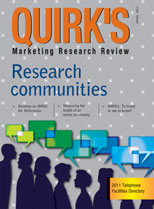The U.S. continues to face highly-sensitive energy price fluctuations and supply variability based on geopolitical and financial disturbances. These are now the facts of everyday life - and paying $3.50 per gallon at the pumps is no longer viewed as an aberration. In some areas, $3.50 would be downright merciful. There is continued upward pressure on utilities, policy makers, renewable energy manufacturers and Smart Grid (electricity networks using digital technology) vendors to develop a new energy infrastructure that will better suit the evolving U.S. climate - economic and environmental. An examination of the renewable energy market offers some telling insights into American attitudes and trends regarding energy, the environment, supplier-user communication and the future.
Never before has the disconnect between energy supply and demand been greater. The Renewable Energy and the Smart Grid report by Zpryme Research and Consulting, Austin, Texas, and ICP Strategies, a Toronto consulting company, presents analysis for balancing the market. The report identifies the risks and barriers to entry for this market, which is relevant not only to players in the Smart Grid space but for each of us as consumers of energy. The electrical grid functionally is arguably outdated, as are the underlying business models and economic ideas surrounding energy production, but the most pressing issues facing renewable energy adoption include lack of storage options and weak economics.
No practical solutions
Storage lies at the heart of what makes renewable energy so complex. We all know this is the most desirable way to generate power, but to date, no practical solutions have emerged for wind or solar energy - the two most untapped energy resources. Both are intermittent by nature so they cannot be relied upon for continuous power, nor can they easily generate enough local energy to do more than keep the lights on in our homes.
Storage is a major challenge for both macro- and micro-level generation. Many farmers would gladly convert their fields to support wind farms or solar farms but the cost of transporting that energy to where it is needed is prohibitive. The same applies to micro-generation, where solar panel or mini-turbines on rooftops can yield a little bit of energy but not enough to power a home around the clock.
Change the status quo
The storage issue is but one factor that makes renewable energy expensive. Weak economics also pose a threat. So long as the price of energy produced by conventional means remains less, the demand for renewable energy will not be enough to radically change the status quo. This works its way back to the supply side the value chain, since all forms of energy production are capital-intensive. Securing investment for large-scale renewable energy projects is challenging without guarantees for pricing and demand. As such, market-driven economics are not stable enough yet to support large-scale adoption of renewable energy. For now, renewable energy must be largely supported by government subsidies and programs to establish a core infrastructure.
Help drive adoption
So what new business models can help drive adoption? From the technology angle, energy storage, real-time communications tools and the Internet could inspire innovation. There are also renewable energy adoption opportunities among resellers, home builders and utilities in the event that compensation models with regulators become more market-driven.
Real-time communications tools are first-nature in our everyday lives but they are uncharted territory for utilities. This capability is fundamental to the Smart Grid concept and represents a paradigm shift for utilities. Until now, utilities didn't have customers - they had rate-payers. Our only form of contact has been the monthly bill and as long as the lights stay on, we don't usually give it a second thought. Smart Grid changes that as consumers become more active partners with the producers. Both parties have needs for information related to energy usage and communications technologies enable that.
Additionally, the Web is poised to become the vehicle that bridges energy consumers and producers. This may be obvious to consumers but utilities have been slow to embrace the Internet. This is equally true in the home, where we see opportunity for mobile applications and electric vehicles.
Approaching the tipping point
Ultimately, the results from the study confirm the widely-held belief that the limitations in renewable energy are not necessarily a result of American consumers' not caring. As renewable energy becomes more affordable and the kinks are ironed out at the top, greater adoption and greater consumer involvement in the utilities industry is possible. And with energy prices climbing, we may be closer to approaching the tipping point to change the so-called status quo from conventional to renewable. For more information visit here.
